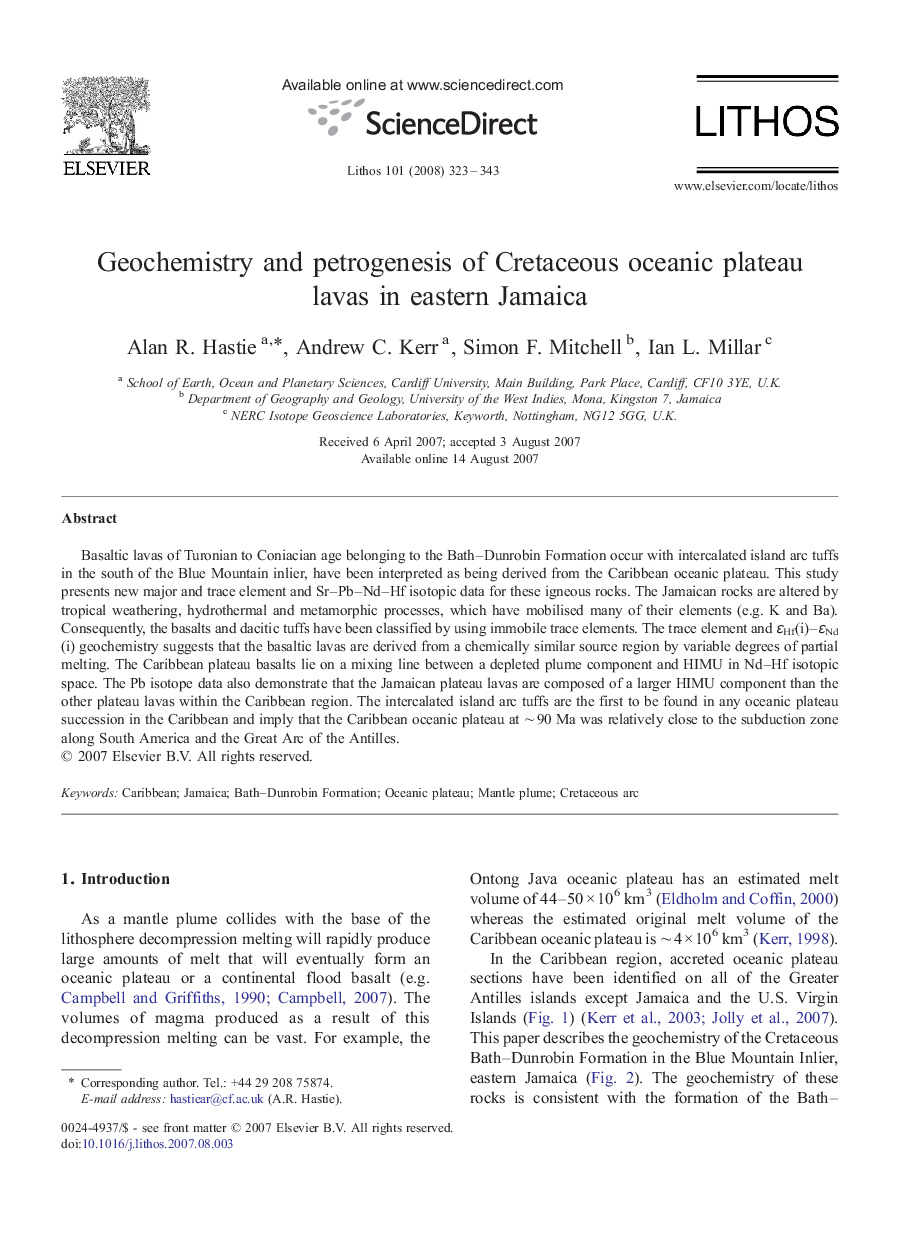| Article ID | Journal | Published Year | Pages | File Type |
|---|---|---|---|---|
| 4717632 | Lithos | 2008 | 21 Pages |
Basaltic lavas of Turonian to Coniacian age belonging to the Bath–Dunrobin Formation occur with intercalated island arc tuffs in the south of the Blue Mountain inlier, have been interpreted as being derived from the Caribbean oceanic plateau. This study presents new major and trace element and Sr–Pb–Nd–Hf isotopic data for these igneous rocks. The Jamaican rocks are altered by tropical weathering, hydrothermal and metamorphic processes, which have mobilised many of their elements (e.g. K and Ba). Consequently, the basalts and dacitic tuffs have been classified by using immobile trace elements. The trace element and ɛHf(i)–ɛNd(i) geochemistry suggests that the basaltic lavas are derived from a chemically similar source region by variable degrees of partial melting. The Caribbean plateau basalts lie on a mixing line between a depleted plume component and HIMU in Nd–Hf isotopic space. The Pb isotope data also demonstrate that the Jamaican plateau lavas are composed of a larger HIMU component than the other plateau lavas within the Caribbean region. The intercalated island arc tuffs are the first to be found in any oceanic plateau succession in the Caribbean and imply that the Caribbean oceanic plateau at ∼ 90 Ma was relatively close to the subduction zone along South America and the Great Arc of the Antilles.
